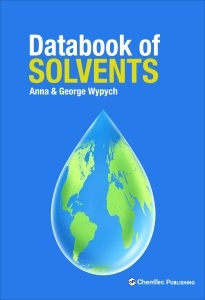Description
Databook of Solvents
Author: Wypych George
Language: English
Subject for Databook of Solvents:
Keywords
Cleaning; chemical; manufacturing; selection; cost; health; safety; environment; carcinogenicity; toxicity; flammability; first aid
Approximative price 220.63 €
In Print (Delivery period: 14 days).
Add to cartDescription
/li>Contents
/li>Biography
/li>Comment
/li>
Use of solvents is increasing in various applications, from cleaning to chemical manufacturing, and solvent selection has a major impact on the costs, health and safety and environmental considerations of any given project. Selecting the ideal solvent can improve economic, environmental and operational performance in processing. Based on the Solvents Database by George Wypych, the Databook of Solvents presents ? for the first time ? this information in book form for ease of reference.
More than 300 of the most essential solvents are included, selected by expert George Wypych. Physical properties are included, as are health and safety considerations (such as carcinogenicity, reproduction/developmental toxicity, flammability) and first aid guidance. Emphasis is given in particular to cost-saving and more efficient replacements for more toxic solvents. Detailed information is also given for usage considerations, including outstanding properties, potential substitutes, features and benefits for each solvent and for which products the solvent is recommended.
1 Introduction
2 Information on the data fields
3 Solvents
3.1 Acids
3.2 Agriculture-based solvents
3.3 Alcohols
3.4 Aldehydes
3.5 Aliphatic hydrocarbons
3.6 Amines
3.7 Aromatic hydrocarbons
3.8 Chlorine-containing solvents
3.9 Esters
3.10 Ethers
3.11 Glycol ethers
3.12 Hydrofluorocarbons
3.13 Ionic liquids
3.14 Ketones
3.15 Miscellaneous
3.16 Phenols
3.17 Polyhydric alcohols
3.18 Sulfur-containing organic solvents
3.19 Supercritical fluids
3.20 Terpenes
- Includes more than 300 of the most essential solvents
- Practical information for use in the lab and the field, including recommended processing methods, recommended dosages, and potential substitutes
- Particular emphasis given to environmental considerations, enabling practitioners to find more efficient replacements for toxic solvents




